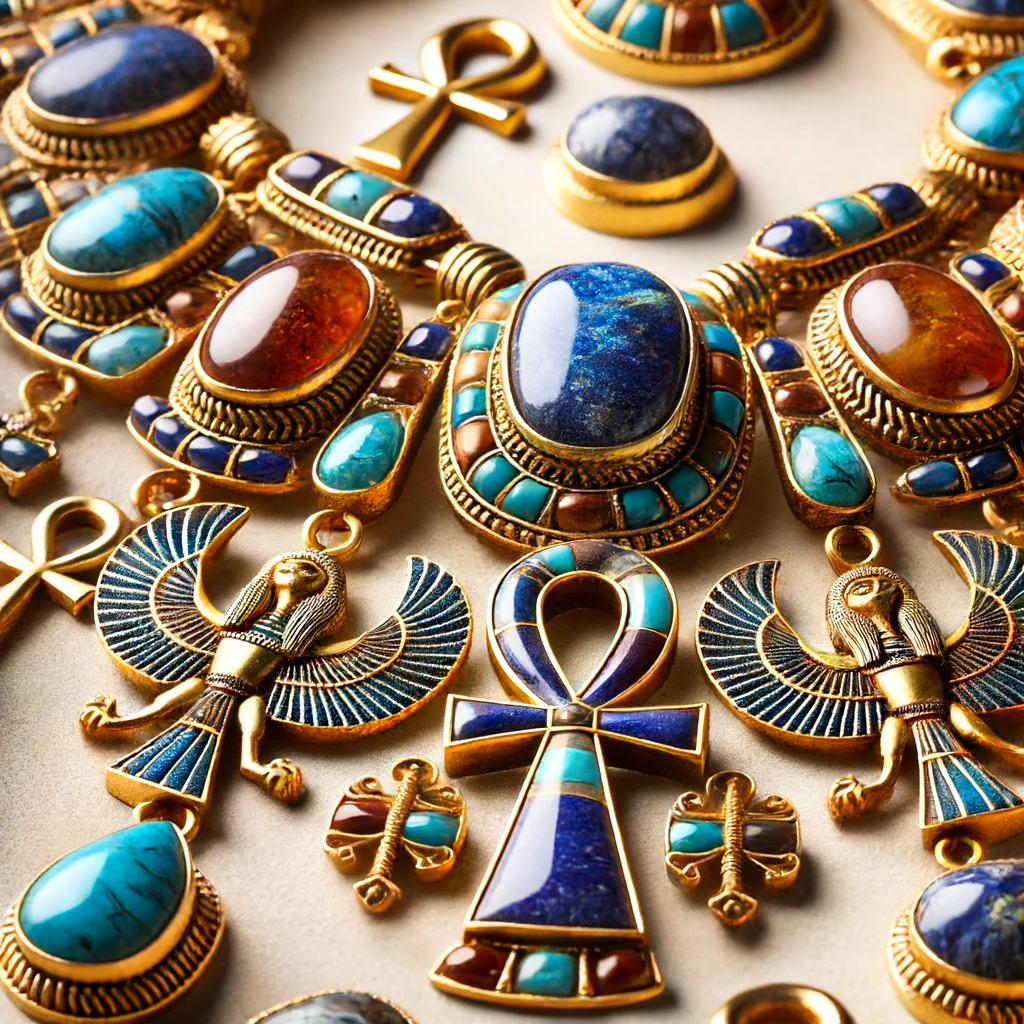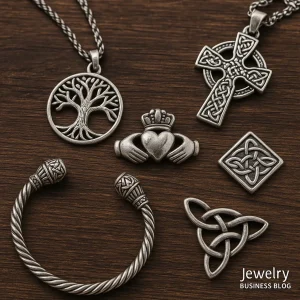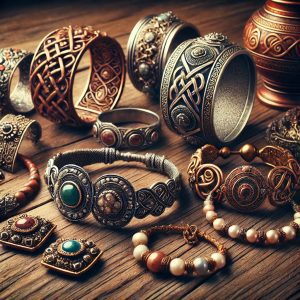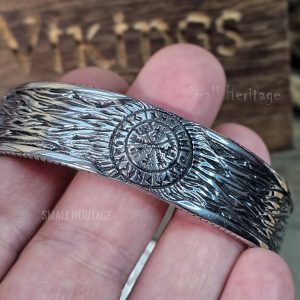Ancient Egyptian jewelry provides a captivating window into the culture, artistry, and beliefs of one of history’s most iconic civilizations. This post explores the materials, motifs, craftsmanship, and enduring influence of Egyptian jewelry.
Symbolism and Materials
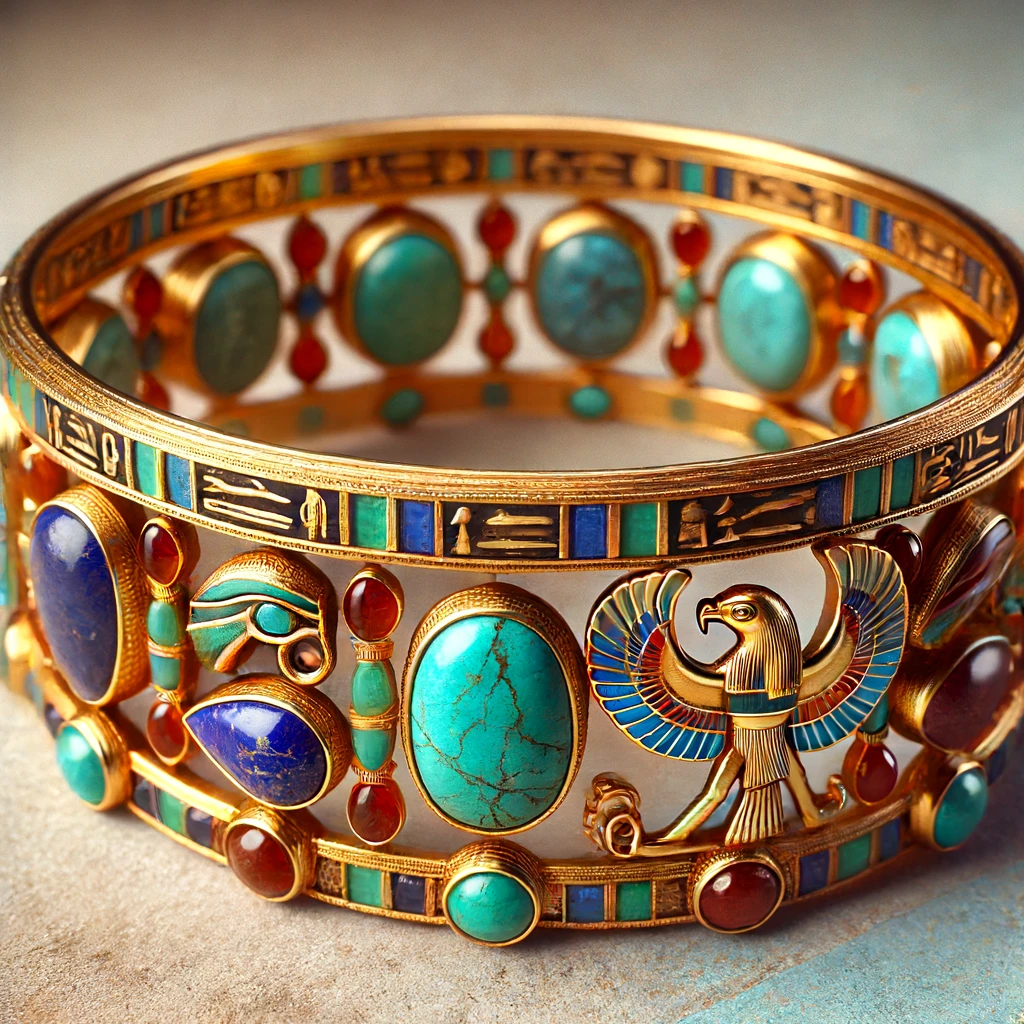
Ancient Egyptian jewelry was not only decorative but also highly symbolic. The materials used were chosen for their perceived magical properties and cultural significance.
Gold: Revered as the flesh of the gods, gold symbolized eternal life, power, and divinity. It was abundantly used in royal jewelry and religious artifacts.
Silver: Despite its rarity in Egypt, silver symbolized the moon and was highly prized.
Gemstones: Various gemstones were used, each with specific symbolic meanings:
- Lapis Lazuli: Represented the heavens and was associated with royalty and power.
- Turquoise: Symbolized health and protection.
- Carnelian: Associated with energy and protection.
- Malachite: Represented new life and regeneration.
These materials were combined to create stunning pieces that held deep spiritual significance for their wearers.
Key Motifs
Ancient Egyptian jewelry often featured motifs that conveyed specific meanings and provided protection.
The Ankh: Known as the “key of life,” the ankh symbolized eternal life. It was often worn as an amulet to provide protection and invoke divine blessings.
The Scarab: This beetle symbolized rebirth and regeneration. Scarab amulets were believed to offer protection and ensure safe passage into the afterlife.
The Eye of Horus: Also known as the Wedjat eye, this symbol represented protection, health, and restoration. It was commonly used in amulets and jewelry to ensure the wearer’s safety in life and death.
Craftsmanship and Techniques
The artisans of ancient Egypt were masters of their craft, using advanced techniques to create intricate and beautiful jewelry.
Granulation: This technique involved fusing tiny gold beads onto a surface to create intricate patterns and textures.
Filigree: Delicate threads of gold or silver were twisted and soldered to create lacy, openwork designs.
Cloisonné: Enamel was used to fill in the compartments created by thin metal strips, resulting in colorful and detailed designs.
These techniques allowed Egyptian jewelers to create pieces that were not only beautiful but also symbolically powerful. Jewelry items were often made with specific purposes in mind, such as protecting the wearer or serving as offerings to the gods.
Practical Applications and Modern Influence
The appeal of ancient Egyptian jewelry extends beyond its historical context. Modern jewelers often draw inspiration from these ancient designs, incorporating motifs like the ankh and scarab into contemporary pieces. The use of traditional materials and techniques ensures that these modern creations retain the timeless beauty and symbolic power of their ancient counterparts.
To learn more about the broader history of jewelry craftsmanship and its evolution, check out our detailed post on The Evolution of Jewelry Craftsmanship: From Ancient Techniques to Modern Innovations.
For those interested in exploring the rich history of ancient Egyptian jewelry further, resources such as the British Museum, the Metropolitan Museum of Art, and the World History Encyclopedia offer extensive collections and detailed information.
For those interested in owning a piece of this legacy, companies like Small Heritage offer a range of historically inspired Egyptian jewelry, including ankh necklaces, allowing enthusiasts to connect with ancient traditions through beautifully crafted pieces.
By understanding the history and significance of ancient Egyptian jewelry, we gain insight into the values, beliefs, and daily lives of this remarkable civilization, enriching our appreciation for these timeless works of art.

